Accurate characterization of the quark-gluon plasma asks for understanding how electromagnetic effects affect the processes mediated by the strong force. All the scenarios in wich the plasma emerges, in nature or in the laboratory, involve strong electromagnetic fields. The early universe, Compact stars or ultra-relativistic heavy ion collisions harbor the most intense fields we know.
Latin America has made a substantial contribution on this subject and the Latin American Network on Electromagnetic Effects in Strongly Interacting Matter aims to join efforts to address open questions related to these systems, boosting collaborations and interaction among its members and connecting Latin America with foreign institutions. In face of the upcoming experimental programs and new facilities, our mission is to bring together experimentalists, phenomenologists and theorists to better explore the new opportunities.
Contact us:
lanemqcd@gmail.com
Ana Julia Mizher (Coordinator): ana.mizher@unesp.br
Brazil
Instituto de Física Teórica – (IFT-UNESP)
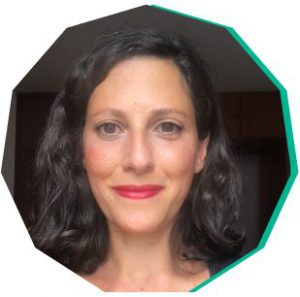 | - Name: Ana Julia Mizher (Coordinator)
- Affiliation: Instituto de Física Teórica – UNESP
- Email address: ana.mizher@unesp.br
I got my PhD from the Federal University of Rio de Janeiro and have done several postdocs after that: at CBPF -Brazil, UNAM-Mexico, KULeuven-Belgium, and now I am at IFT-UNESP in São Paulo. I am interested in the phenomenology of the quark-gluon plasma and matter under extreme conditions in general. I have explored Quantum Chromodynamics in high temperature, density, magnetic background and topological effects. Currently I am especially interested in possible connections between high energy physics and condensed matter through anomalous transport phenomena.
| |
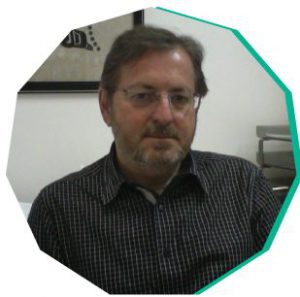 | - Name: Gastao Krein
- Affiliation: Instituto de Fisica Teorica, Sao Paulo
- Email address: gastao.krein@unesp.br
- Institutional webpage: https://professores.ift.unesp.br/gastao.krein/
Theoretical and computational physics in the area of the strong interactions.
| |
| | | |
Universidade Estadual de Campinas (UNICAMP)
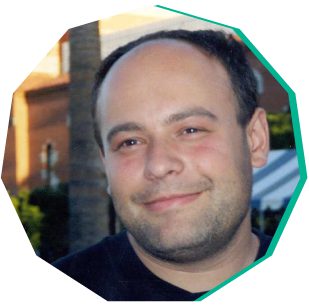 | - Name: Giorgio Torrieri
- Affiliation: IFGW Unicamp
- Email address: torrieri@unicamp.br
- Institutional webpage: https://sites.ifi.unicamp.br/torrieri/en/
I work on connections between hydrodynamics and statistical mechanics in the ultrarelativistic regime, trying to understand thermalization in small systems and statistical properties of quark matter.
| |
| | | |
Universidade Federal de Goiás
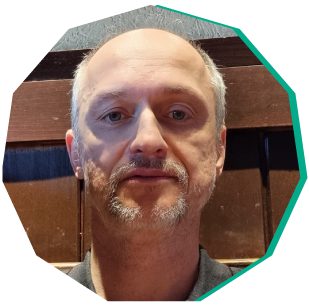 | - Name: Fabio L. Braghin
- Affiliation: Universidade Federal de Goiás
- Email address: braghin@ufg.br | braghin.ufg@gmail.com
I am an associate professor at the Federal University of Goias, Goiânia, working in the interface between QCD and Hadron Physics with analytical methods also with the aim of calculating observables in the vacuum and under finite energy density. | |
| | | |
Universidade Federal do Rio de Janeiro (UFRJ)
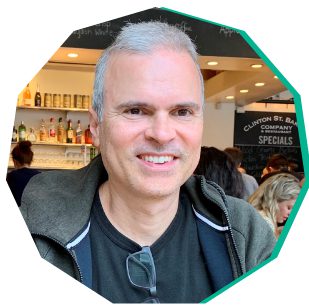 | - Name: Eduardo Souza Fraga
- Affiliation: Instituto de Física, Universidade Federal do Rio de Janeiro
- Email address: fraga@if.ufrj.br ; edfraga@mac.com
- Institutional webpage: http://darnassus.if.ufrj.br/~fraga/esf/welcome.html
BSc in Physics (1991) and MSc in Physics (1994) from Pontifícia Universidade Católica do Rio de Janeiro (PUC-Rio) and PhD in Physics (1998) from Universidade Federal do Rio de Janeiro (UFRJ). Postdoctoral positions: Universidade do Estado do Rio de Janeiro — UERJ (1998-1999); Brookhaven National Laboratory (BNL), New York (1999-2001); Laboratoire de Physique Théorique (LPT), Université de Paris XI – CNRS, Orsay (2001-2002) . Since 2002 Professor at Instituto de Física, Universidade Federal do Rio de Janeiro. HIC for FAIR Guest Professor at the Goethe Universität, in Frankfurt, from March 2013 to February 2014. Affiliate Member of the Brazilian Academy of Sciences from 2011 to 2015. Cientista do Nosso Estado (FAPERJ) since 2015. Research interests: particle physics, field theory and astrophysics, especially in systems under extreme conditions, working mainly on the following topics: QCD at finite temperature and density, methods of field theory at finite temperature, effects of magnetic fields on strong interactions, effective models for QCD, chiral phase transition and deconfinement, with applications in ultra-relativistic heavy ion collisions and compact stars.
| |
| | | |
Universidade Federal de Santa Catarina (UFSC)
 | - Name: Sidney dos Santos Avancini
- Affiliation: Universidade Federal de Santa Catarina
- Email address: sidney.avancini@ufsc.br
PHD – Universidade de São Paulo, Brazil (1990). I am a professor at the Universidade Federal de Santa Catarina since 1993. Research interests: Neutron stars, magnetars, hadron and quark matter at extreme electromagnetic fields, QCD phase diagram at nonzero temperature, chiral and isospin chemical potentials.
|
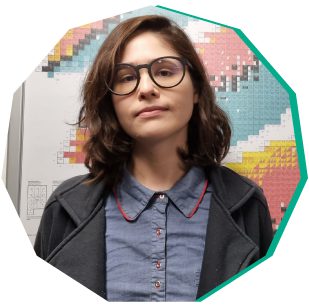 | - Name: Betânia Camille Tumelero Backes (PhD candidate)
- Affiliation: Univeristy of York
- Email address: bctb501@york.ac.uk
A very brief review about your career and topics of interest: Doctorate student at the University of York, MSc (2021) and BSc (2019) in physics at the Universidade Federal de Santa Catarina. Interested in nuclear structure, nuclear density functional theory, quark matter under extreme conditions, neutron and quark stars, and the quantum chromodynamics (QCD) phase diagram and phase transitions.
|
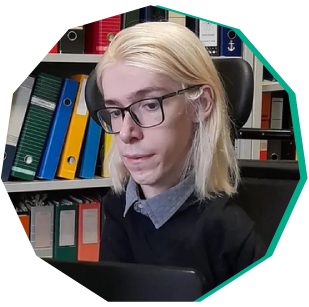 | - Name: Kauan Dalfovo Marquez (PhD candidate)
- Affiliation: Universidade Federal de Santa Catarina
- Email address: marquezkauan@gmail.com
Doctorate student at Universidade Federal Santa Catarina, Brazil, where develops research in the area of effective models for quantum chromodynamics (QCD), with applications in the study of the QCD phase diagram and in the description of stellar remnants.
|
 | - Name: Débora Peres Menezes
- Affiliation: Universidade Federal de Santa Catarina
- Email address: debora.p.m.26@gmail.com
- Institutional webpage: debora.fsc.ufsc.br/en/
D.Phil, Oxford University, England (1989) ; MSc – Instituto de Física, Universidade de São Paulo, Brazil (1986);
BSc – Instituto de Física, Universidade de São Paulo, Brazil (1983); Physics teaching – Instituto de Física, Universidade de São Paulo, Brazil (1985).
President of the Brazilian Physical Society (since 2021 – sbfisica.org.br),
professor at the Universidade Federal de Santa Catarina since 1992 and member of the Brazilian Academy of Sciences. Research interests:
Nuclear astrophysics (equations of state, relativistic models, hadronic matter, quark matter), quantum chromodynamics (QCD) phase diagram and phase transitions, strong magnetic fields in hadronic and quark matter, nuclear structure, general relativity (applications of modified gravity), science dissemination and communication.
|
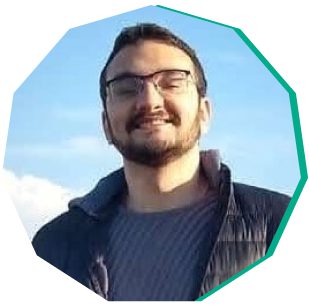 | - Name: Mateus Reinke Pelicer (PhD candidate)
- Affiliation: Universidade Federal de Santa Catarina
- Email address: m.reinke.pelicer@posgrad.ufsc.br
Currently a doctoral student at Universidade Federal Santa Catarina, Brazil. Master’s at the same university (2019). BSc in physics at Universidade Estadual de Maringá, Brazil (2017).
Topics of interest: nuclear matter and effective relativistic models, neutron and quarks stars, nuclear pasta, magnetized nuclear matter.
|
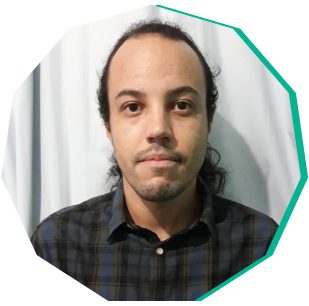 | - Name: William Rafael Tavares
- Affiliation: Post-Doc position at UFSC (Universidade Federal de Santa Catarina)
- Email address: william.tavares@posgrad.ufsc.br
Currently, he is a postdoctoral fellow at UFSC. He completed his PhD in hadron physics from the same university in 2019. His main research topic lies in the applications of effective theories in hadronic physics under conditions of finite temperatures, densities and electromagnetic fields.
| |
| | | |
Universidade Federal de Santa Maria (UFSM)
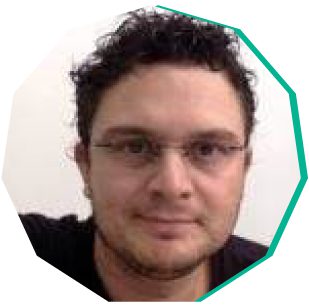 | - Name: Ricardo Luciano Sonego Farias
- Affiliation: UFSM
- Email address: ricardo.farias@ufsm.br
- Institutional webpage: https://ufsmpublica.ufsm.br/docente/16956
I’m a theoretical particle physicist working with effective models of QCD. My interests are focused on the physics of quark matter under extreme conditions: high temperatures, high densities and strong electromagnetic fields.
I am an associate professor at the Department of Physics at the Federal University of Santa Maria (UFSM) and researcher at the research group Strong Interagent Matter in Extreme Environments (SIMEE) at UFSM.
| |
 | - Name: Dyana Cristine Duarte
- Affiliation: UFSM
- Email address: dyana.c.duarte@gmail.com
Physics (2011) and Master’s (2013) degrees from Universidade Federal de São João del Rei, PhD in Physics from Universidade Federal de Santa Maria, Postdoctoral positions at Instituto Tecnológico de Aeronáutica (2018-2019), Institute for Nuclear Theory (2019-2021) and Instituto Tecnológico de Aeronáutica (2021-current). I have experience in topics related to nuclear and particle physics, quark matter under extreme conditions, and models for quarkyonic matter. Recently I have been working on two main topics: elaboration/use of QCD effective models for the description of its phase diagram under extreme conditions, and formulation/solution of Dyson-Schwinger equations directly in Minkowski space.
|
Universidade Federal do Rio Grande do Sul (UFRGS)
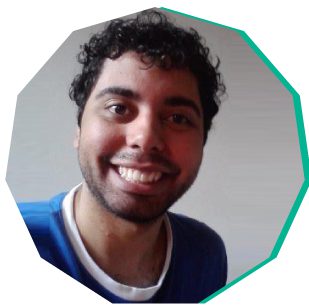 | - Name: Cesar Augusto Bernardes
- Affiliation: Instituto de Física – Universidade Federal do Rio Grande do Sul (IF – UFRGS)
- Email address: cesar.augusto.bernardes@cern.ch
Associate professor at Universidade Federal do Rio Grande do Sul (UFRGS). Since 2016, has been working in experimental high-energy nuclear physics, analyzing data from the Compact Muon Solenoid (CMS) experiment at the LHC. Has worked with physics analyses in the subject of femtoscopy and azimuthal correlations in proton-proton (pp), proton-lead (pPb), and lead-lead (PbPb) collisions, in special with observables that provide means to study phenomena associated with very strong electromagnetic fields predicted to be created in ultrarelativistic heavy-ion collisions. In 2018, was contact of the Outer Tracker subdetector of the CMS during the PbPb data-taking of November-December of 2018. From September/2019 to September/2021 was convener of the physics analyses group of Flow and Correlations in the CMS collaboration. Since September/2021 is convener of a group responsible for the development and maintenance of the charged particle reconstruction (tracking) software in heavy-ions collisions at CMS.
| |
| | | |
Universidade de São Paulo (USP)
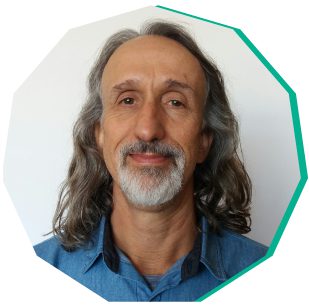 | - Name: Fernando Siveira Navarra
- Affiliation: Instituto de Fisica – USP
- Email address: navarra@if.usp.br
I work with hadronic physics and QCD. The connection with this network is in the interest in the electromagnetic field generated in high energy nuclear collisions. We are developing a method to indirectly measure this field through the pion magnetic excitation. More details in the following recent papers:1)I. Danhoni and F.S. Navarra, Phys. Rev. C \textbf{103}, 024902 (2021).
2)I. Danhoni and F.S. Navarra, Phys. Lett. B \textbf{805}, 135463 (2020).Argentina
| |
Department of Theoretical Physics, Comisión Nacional de Energía Atómica (CNEA)
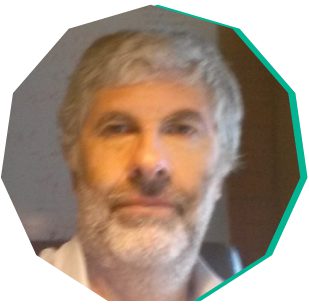 | - Name: Norberto N. Scoccola
- Affiliation: Department of Theoretical Physics, Comisión Nacional de Energía Atómica
- Email address: scoccola@tandar.cnea.gov.ar
- Institutional webpage: http://www.tandar.cnea.gov.ar/~scoccola/
I am a theoretical physicist mostly interested in several aspects of nuclear and hadron physics.
I got my Ph.D. from Instituto Balseiro, Argentina in 1985 and after several post-docs (CEA, Saclay, France: University of Regensburg, Germany; Niels Bohr Institute, Denmark) I got a permanent position at Comision Nacional de Energía Atómica and Conicet, Argentina in 1993. I have also spent two years at the University of Milano, Italy (1994-1996) and I am presently spending a sabbatical (till Sept.2022) at the University of Valencia, Spain. During my PhD I worked in nuclear physics structure. After that I got more interested in hadron structure and related areas. I have worked on several effective models (Skyrme model, NJL model, etc), Large Nc QCD, etc. In recent years I have been especially interested in the effect of strong magnetic fields in the QCD phase diagram, hadron properties, etc.
| |
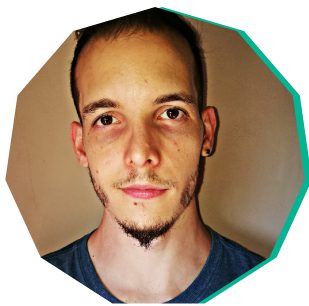 | - Name: Maximo Coppola (PhD candidate)
- Affiliation: CONICET; Argentina and Physics Department, Comisión Nacional de Energía Atómica (CNEA)
- Email address: maxx.coppola@gmail.com
For my PHD thesis I am working on the effects of strong magnetic fields on quark matter using effective models. Such strong fields could be relevant for heavy ion collisions or astrophysical environments. Recently, I have been studying pion properties in the presence of magnetic fields, such as their masses and decay constants. While neutral mesons can be diagonalized in the usual momentum basis, for charged ones the use of the Ritus basis is necessary. Another important aspect is the choice of a proper regularization scheme. In addition to the effect on the masses, new axial and even vector decay constants emerge independently of the model, which change the pion mean lifetime. Within the local NJL model, I have analyzed the impact of an external magnetic field on pion masses and their decay constants, as well as on the masses of nucleons and other pseudoscalar mesons.
| |
| | | |
Chile
Pontificia Universidad Católica de Chile (PUC-Chile)
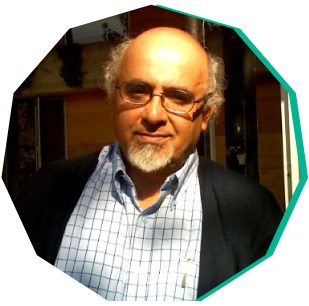 | - Name: Marcelo Loewe
- Affiliation: Instituto de Física, Pontificia Universidad Católica de Chile
During the last years I have been involved in several projects dealing with external effects in hadron dynamics and QCD (temperature, density, external electromagnetic fields, isospin chemical potential) paying special attention the the QCD phase diagram, as well as applications of QFT to the physics of materials like graphene. The techniques we have used are QCD Sum Rules, Effective Lagrangians like Linear sigma model, chiral lagrangians, NJL model including a Polyakov term, etc.
| |
 | - Name: Enrique Muñoz Tavera
- Affiliation: Associate Professor, Physics Institute, Pontificia Universidad Catolica de Chile
- Email address: munozt@fis.puc.cl
Dr. Enrique Muñoz is an Associate Professor of Physics at PUC. He is a Bio-Chemical Engineer and a Physicist, that holds a PhD. in Physics and a PhD. in Bioengineering, both at Rice University, Houston.
His expertise is in Statistical Mechanics and Quantum Field Theory methods, in the context of many-body problems in strongly-correlated matter. After graduation, he became a postdoctoral researcher at the Department of Mechanical Engineering and Materials Science at Rice (2009-2010) (with Dr. Boris Yakobson) funded by the aeronautical company Lockheed-Martin (LANCER).
His current research interests include:
• Transport phenomena (electrical, thermal) in solids and nanostructures (Quantum dots). Strongly correlated electronic systems.
• Quantum field theory in topological materials and in high-energy physics.
| |
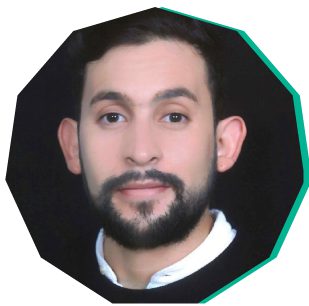 | - Name: Jorge David Castaño Yepes
- Affiliation: Institute of Physics, Pontificia Universidad Católica de Chile
- Email address: jcastano@fis.uc.cl, jorgecastanoy@gmail.com
Ph.D. by Universidad Nacional Autónoma de México. I had worked on the effects of high temperatures, densityes and intense magnetic fields on QCD-related phenomena. In particular, to understand the role of chemical baryonic density and temperature in the QCD-phase diagram, the impact of magnetic fields in the photon production in ultrarelativistic heavy-ion collisions, and thermal and magnetic screening properties for QCD/QED media. Also, my research covers topics in condensed matter systems such as quantum dots, topological insulators, photonic crystals, and super-statistical approaches to out-of-equilibrium thermodynamics. Currently I have a postdoctoral position at Pontificia Universidad Católica de Chile, where I study the impact of disorder and geometry in topological systems.
| |
| | | |
Universidad del Bio-Bio (UBB)
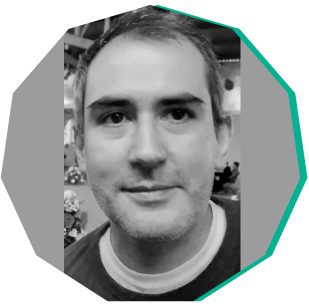 | - Name: Cristian Villavicencio
- Affiliation: Centro de Ciencias Exactas & Departamento de Ciencias Básicas, Facultad de Ciencias, Universidad del Bio-Bio
- Email address: cvillavicencio@ubiobio.cl
- Institutional webpage: http://www.ubiobio.cl/miwe/webubb.php?id_pagina=7351
Quantum Chromodynamics (QCD) under extreme conditions. Compact star phenomenology. Relativistic heavy-ion collisions phenomenology.
Quantum field theory at finite temperature, density and external electromagnetic fields. QCD phase diagram.
Dirac-Weyl semimetals and equivalent condensed matter – high energy physics systems.
QCD finite energy sum rules, Nambu–Jona-Lasinio model, linear sigma model, Chiral Perturbation Theory.
| |
| | | |
Cuba
Universidad de La Habana
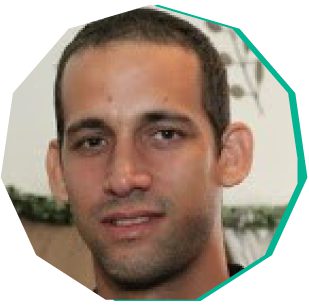 | - Name: Daryel Manreza-Paret
- Affiliation: Universidad de La Habana, Facultad de Física
- Email address: dmanreza@fisica.uh.cu, dmanreza@gmail.com
I completed my PhD in 2015, between 2016 and 2018 I did a postdoctoral stay at the ICN/UNAM, Mexico and I currently have a position at the Faculty of Physics of the University of Havana.
My fundamental line of research has been the study of the effects of magnetic fields on the equations of state and structure of compact objects.
| |
| | | |
Mexico
Universidad Nacional Autónoma de Mexico (UNAM)
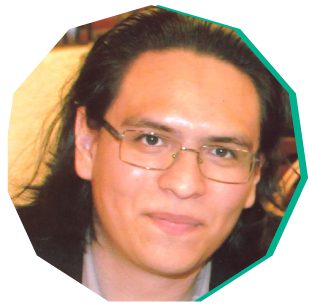 | - Name: Daniel Ávila Hernández
- Affiliation: Instituto de Ciencias Nucleares, UNAM
- Email address: daniel.avila@correo.nucleares.unam.mx
- Institutional webpage: https://sigi.nucleares.unam.mx/sgiicn/people/user/view/id/24634
I obtained my B. Sc. degree in Physics from Facultad de Ciencias UNAM in 2016, and latter my Masters and Ph.D. in Physics degrees from Posgrado en Ciencias Físicas UNAM in 2018 and 2022 respectively. I am currently a postdoctoral researcher at Instituto de Ciencias Nucleares UNAM.
My main research interest is how a very intense magnetic field affects the properties of the quark-gluon plasma generated in high energy collisions, by using methods from the gauge/gravity correspondence. I am also interested in studying various quantum information quantities, such as computational complexity or entanglement entropy, and how they relate to the emergence of spacetime by means of the gauge/gravity correspondence.
|
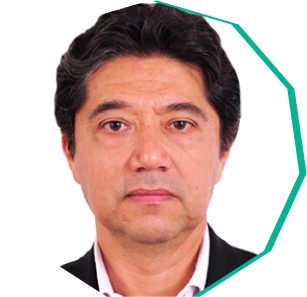 | - Name: Alejandro Ayala
- Affiliation: Instituto de Ciencias Nucleares, UNAM
- Email address: ayala@nucleares.unam.mx
- Institutional webpage: https://sigi.nucleares.unam.mx/sgiicn/people/user/view/id/5
I am a full professor in the High Energy Physics Department of the Institute for Nuclear Sciences UNAM since 2009. I am currently a member of the MPD collaboration where I serve as the chair of the International Board since 2021. In general I am interested in the physics of strongly interacting systems such as the ones produced in relativistic heavy-ion collisions, the early universe and compact astrophysical objects. The effects of magnetic fields on the properties of such systems are one of my prime interests.
| |
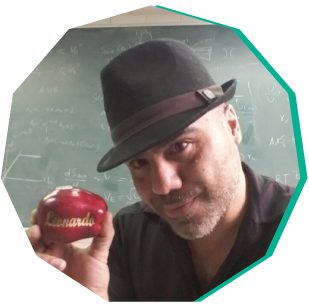 | - Name: Erick Leonardo Patiño Jaidar
- Affiliation: Facultad de Ciencias, UNAM
- Email address: leopj@ciencias.unam.mx
- Institutional webpage: https://dirac.fciencias.unam.mx/leonardo/leoeng.html
I finished my undergraduate studies at the Science College of UNAM followed by my masters degree at the Physics Institute of UNAM and my PhD at the Nuclear Sciences Institute of UNAM. After finishing my PhD in 2003, I started a postdoctoral research stay at the Department of Mathematical Sciences at the University of Durham. In 2005 I became a postdoctoral researcher at the Physics Department at the University of California at Santa Bárbara, where I stayed for a year. In 2006 I came back to UNAM, where I spent a little over a year working at the Physics Institute of UNAM after which I became an assistant professor at the Science College of UNAM in February 2008, getting tenured as an Associate Professor in June 2011, and promoted as full Professor in June 2019.
My main research interest is in Fundamental Physics in the context of Gravity and High Energy. Over the last years I have developed the research program MQGP, which employs the gauge/gravity correspondence to try and elucidate the effect that an intense magnetic field has over the quark-gluon plasma. In this program participate researchers and students from Mexico and other countries. Concerning gravity, I have always been interested in the generalizations of General Relativity, like the f(R) theories and their consequences that I have studied in the past, but also proposals that treat spacetime as an emergent entity. I have recently started research in this last direction from various perspectives, that include, but are not limited to, the gauge/gravity correspondence.
| |
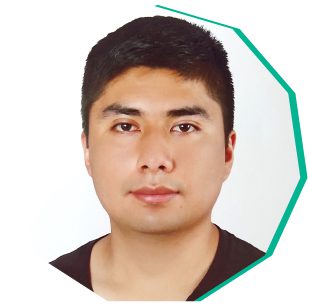 | - Name: José Luis Hernández Hernández (PhD candidate)
- Affiliation: Instituto de Ciencias Nucleares, Universidad Nacional Autónoma de México
- Email address: luis.hernandez@ciencias.unam.mx
My main research interest is the study of strongly interacting systems under extreme conditions. In particular, I am interested in the current theoretical efforts to study the phase transitions of matter by the change of thermodynamic parameters and in the presence of electromagnetic fields and the properties of compact objects and systems generated in relativistic heavy-ion collisions. During my postgraduate studies, I studied the behavior of the coupling constants and the neutral pion’s mass in a magnetized medium by using the linear sigma model with quarks, an effective low-energy theory of Quantum Chromodynamics. Currently, I am working with this model at finite temperature and isospin chemical potential with the purpose of studying the Bose-Einstein condensation of charged pions and the behavior of the condensates as a function of isospin chemical potential at a fixed temperature.
| |
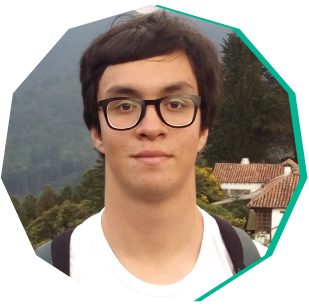 | - Name: Santiago Bernal Langarica (PhD candidate)
- Affiliation: Instituto de Ciencias Nucleares, Universidad Nacional Autónoma de México
- Email address: sanberlan@ciencias.unam.mx
- Institutional webpage: https://sigi.nucleares.unam.mx/sgiicn/people/user/view/id/17123
My main research is high-energy physics phenomenology. I have worked on the neutron star’s kick velocity problem, (Int. J. Mod. Phys. E 30 No. 05, 2150031 (2021)). In this work, we show that the neutrino chirality flip, which can take place in the core of a neutron star at birth, is an efficient process to allow neutrinos to anisotropically escape, thus providing a plausible explanation to the neutron star kick velocities. I have also worked on pion interferometry on relativistic heavy-ion collisions (Phys. Rev. D 105, 056001 (2022)), where we studied the combined effects of a finite volume and an external magnetic field on the charged two-pion correlation function.
| |
| | | |
Universidad Autónoma Metropolitana (UAM)
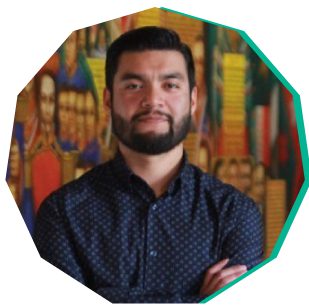 | - Name: Luis Alberto Hernández
- Affiliation: Departamento de Física, Universidad Autónoma Metropolitana Unidad Iztapalapa
- Email address: lhernandez.rosas@izt.uam.mx, luis.hr@xanum.uam.mx
I obtained my Ph.D. from University of Cape Town (South Africa) in 2016. I am a former postdoc at Instituto de Ciencias Nucleares at UNAM (Mexico). I am currently a professor at the Department of Physics and member of the MPD-NICA collaboration .
As a theoretical physicist, my research interest is focused on the understanding of collective phenomena of the strong interaction. I have been studying systems like relativistic heavy-ion collisions, neutron stars and the early universe in order to understand the behavior of the nuclear matter under extreme conditions such as high temperatures, densities or/and strong magnetic fields.
| |
| | | |
Universidad de Colima
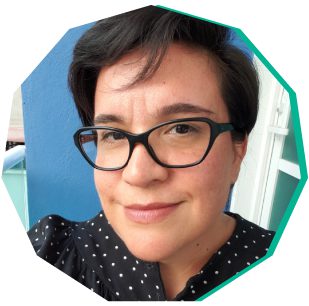 | - Name: Maria Elena Tejeda-Yeomans
- Affiliation: Universidad de Colima
- Email address: matejeda@ucol.mx
- Institutional webpage: https://malena-tejeda.blog.ucol.mx/
I did my PhD at Durham University (UK), where I worked at the Institute for Particle Physics Phenomenology, specializing in multi-loop calculations relevant for QCD observables. Then, I did a postdoc at the C.N. Yang Institute for Particle Theory (Stonybrook U., US), working on the divergent structure of scattering amplitudes and calculating relevant observables for the LHC program. In 2004 I became a professor in the Physics Department of Universidad de Sonora, where I was co-founder of the Particle Physics and Cosmology Group and the postgraduate group for HEP phenomenology. I am currently a full-time professor and researcher at Facultad de Ciencias, Universidad de Colima. My research work has touched upon several areas such as, perturbative and non-perturbative aspects of quantum field theories, extreme particle physics with hadron collider phenomenology, and heavy-ion physics with heavy-ion collider phenomenology. In the last 5 years or so, I focused on the production mechanisms of electromagnetic fields created in heavy-ion collision environments and their effects in QGP-related observables, such as photon production, flow/vorticity and hyperon polarization. Lately, I am learning about QCD-inspired effective models that provide predictions of criticality in the QCD phase diagram due to the influence of such magnetic fields, and working together with my collaborators and students to implement these models in simulation frameworks, in order to study observables at RHIC and NICA energies.
| |
| | | |
Universidad Michoacana de San Nicolás Hidalgo (UMSNH)
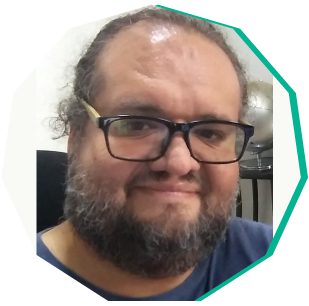 | - Name: Alfredo Raya
- Affiliation: Instituto de Física y Matemáticas, Universidad Michoacana de San Nicolás de Hidalgo
- Email address: alfredo.raya@umich.mx
QCD under extreme conditions (temperature, density and magnetic fields), QCD phase diagram. Effective models. Condensed matter analogs.
| |
| | | |





























